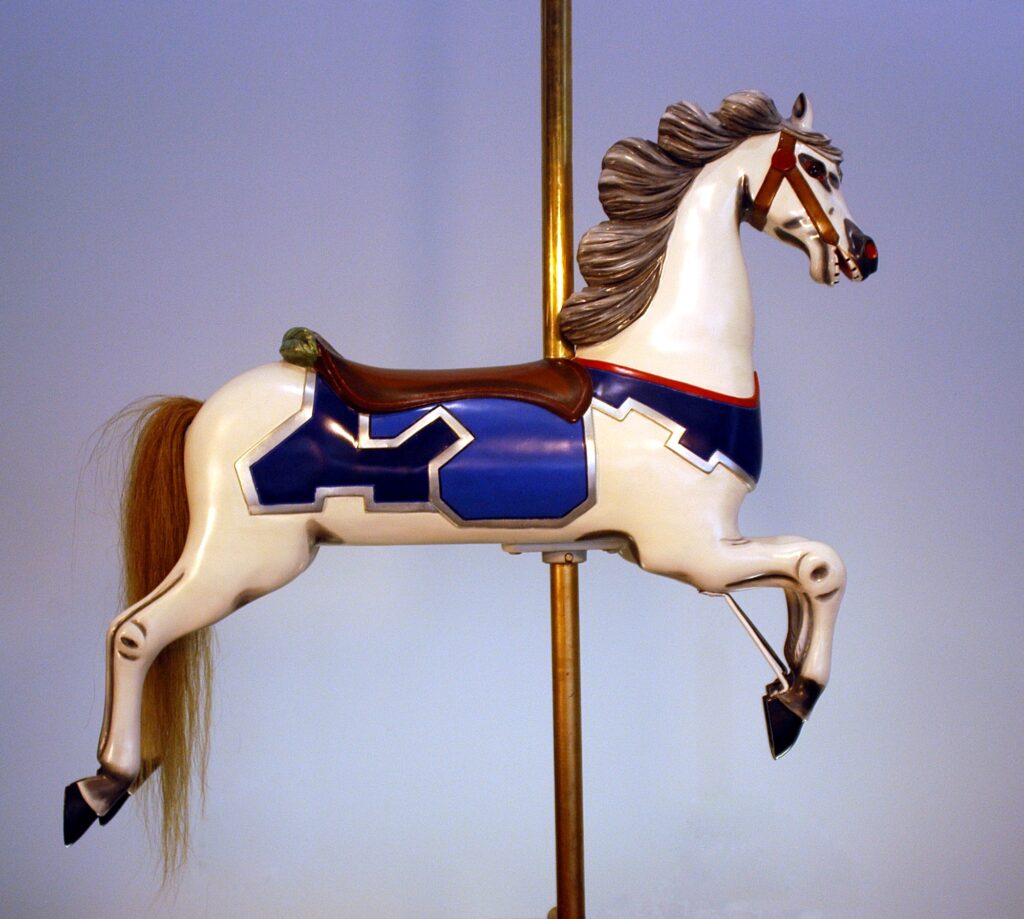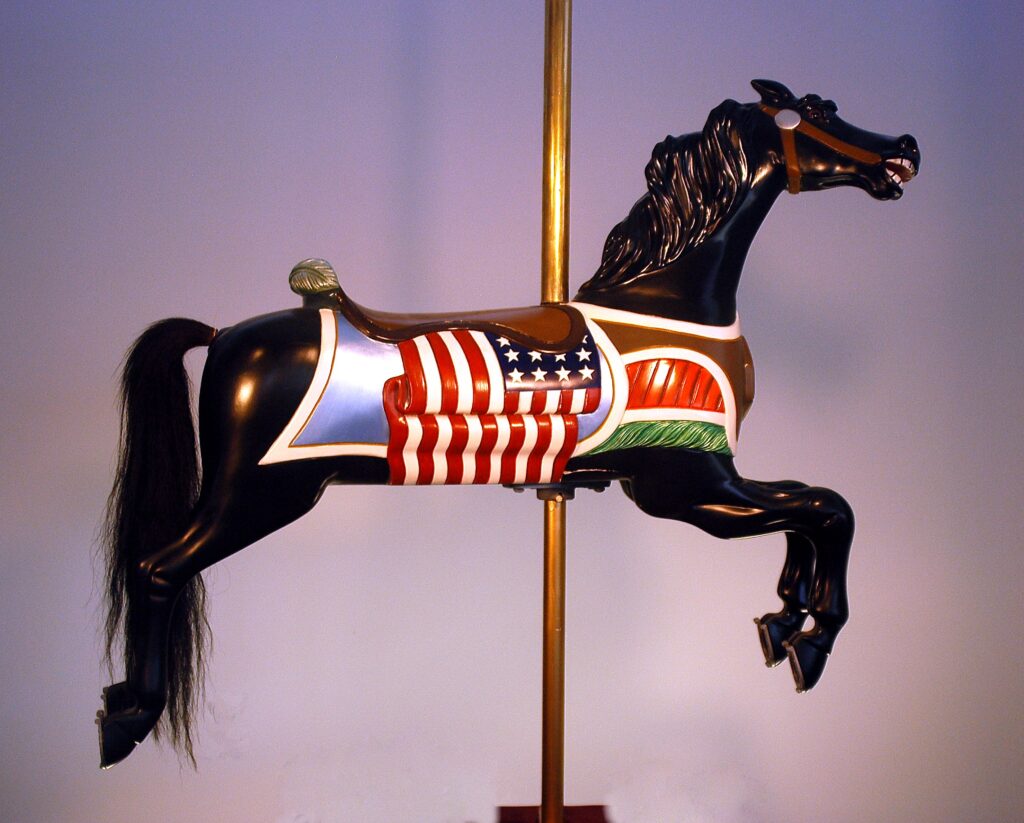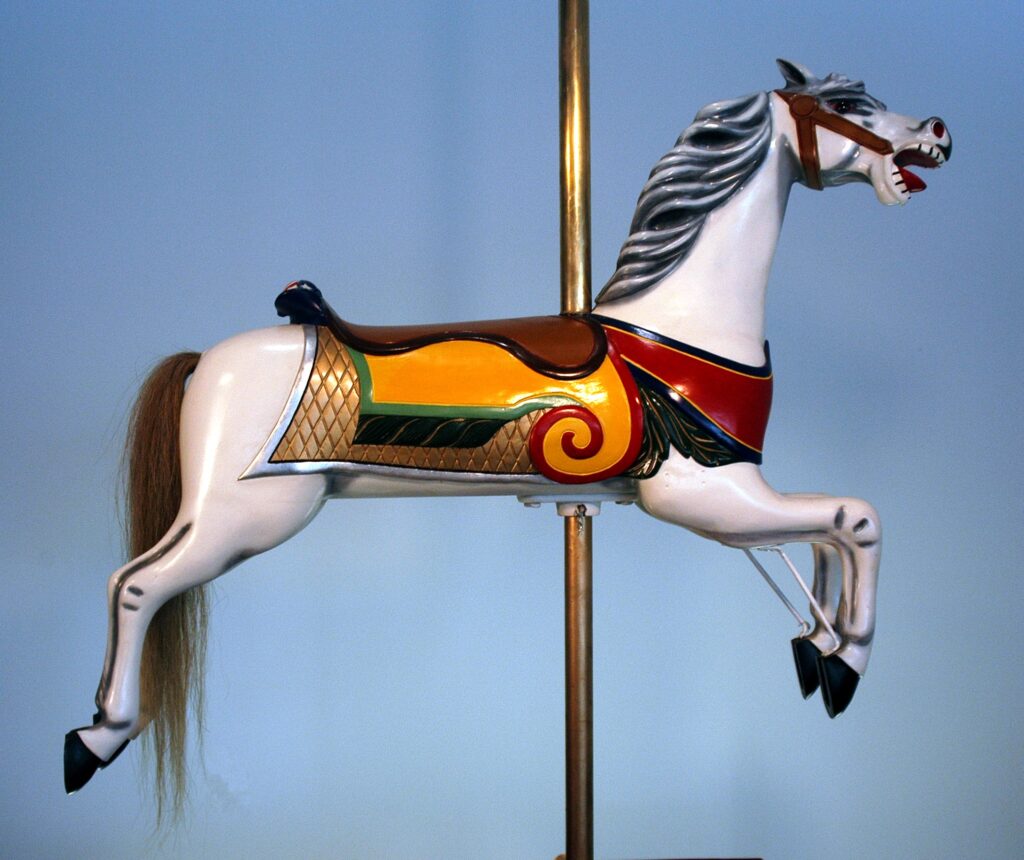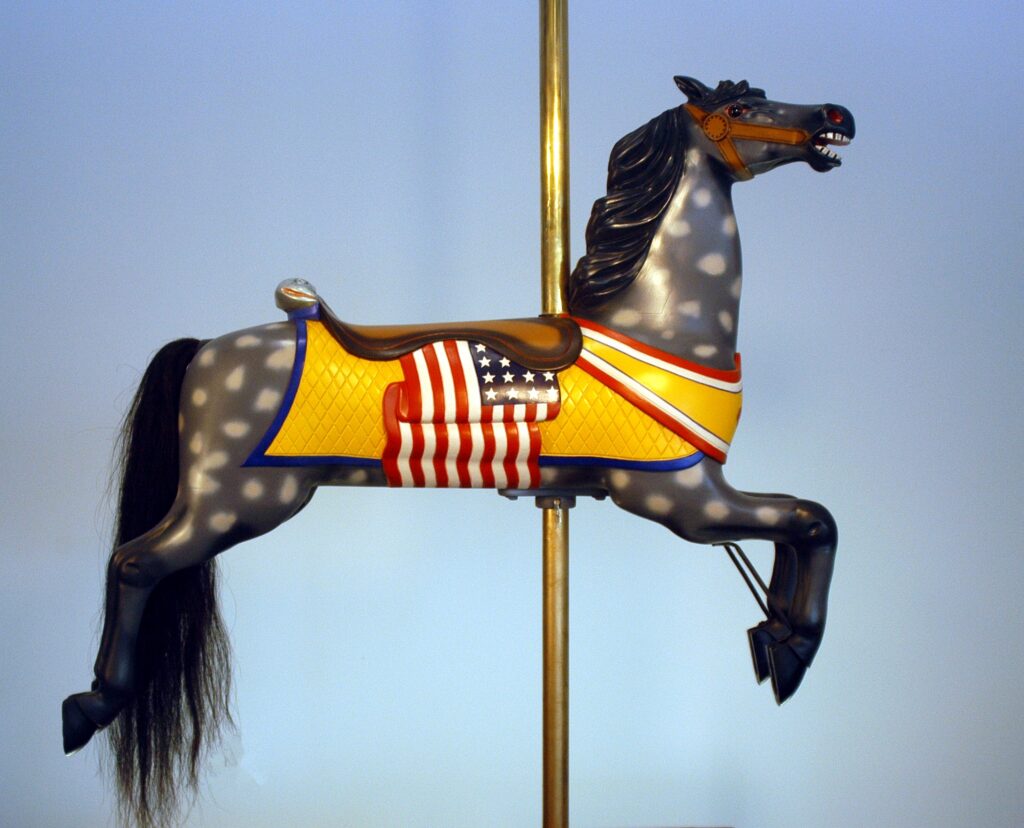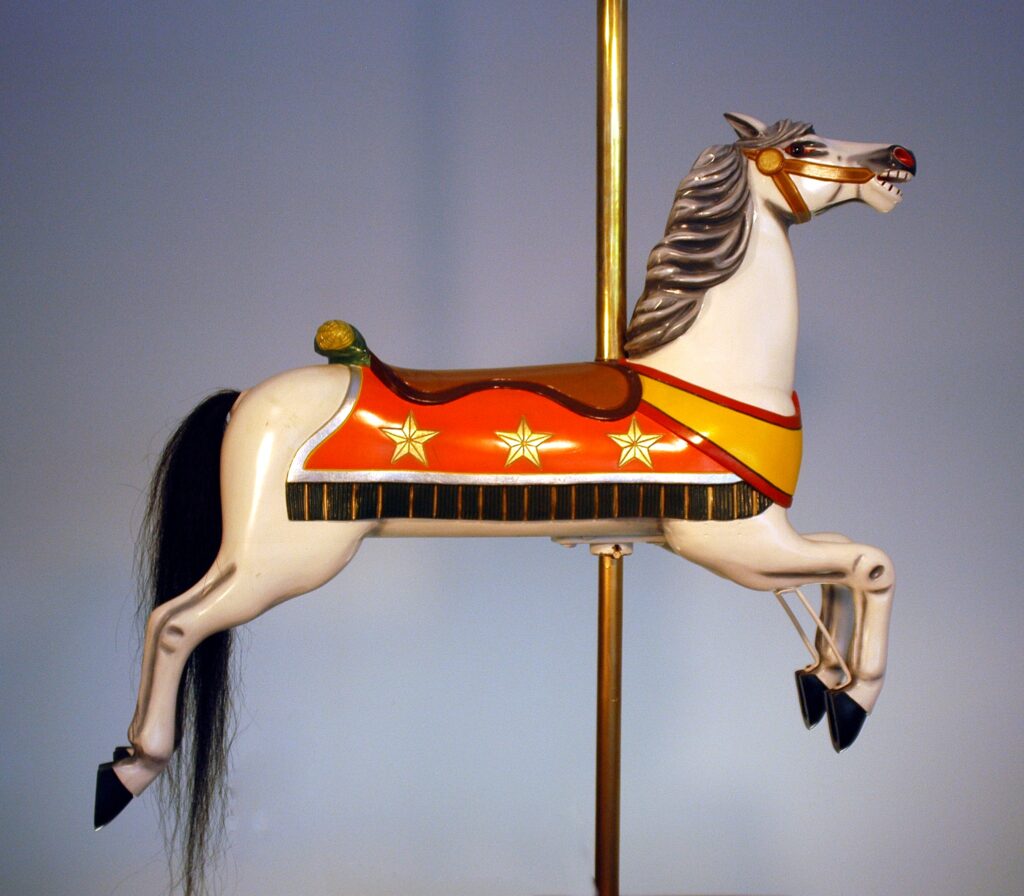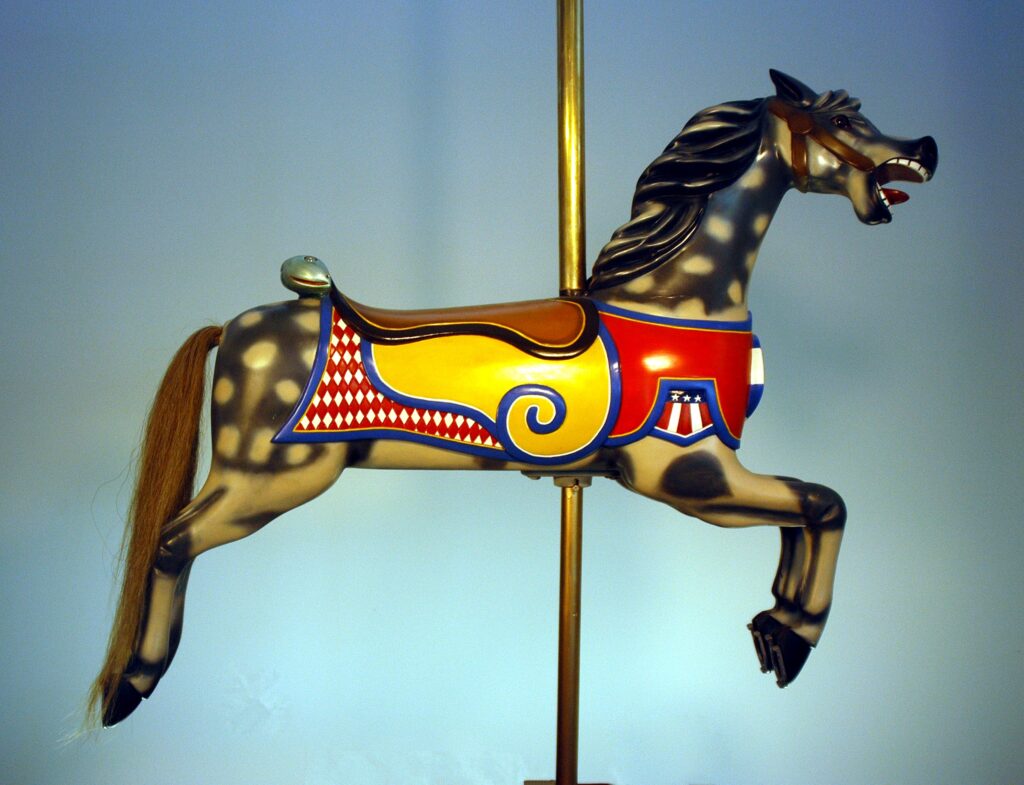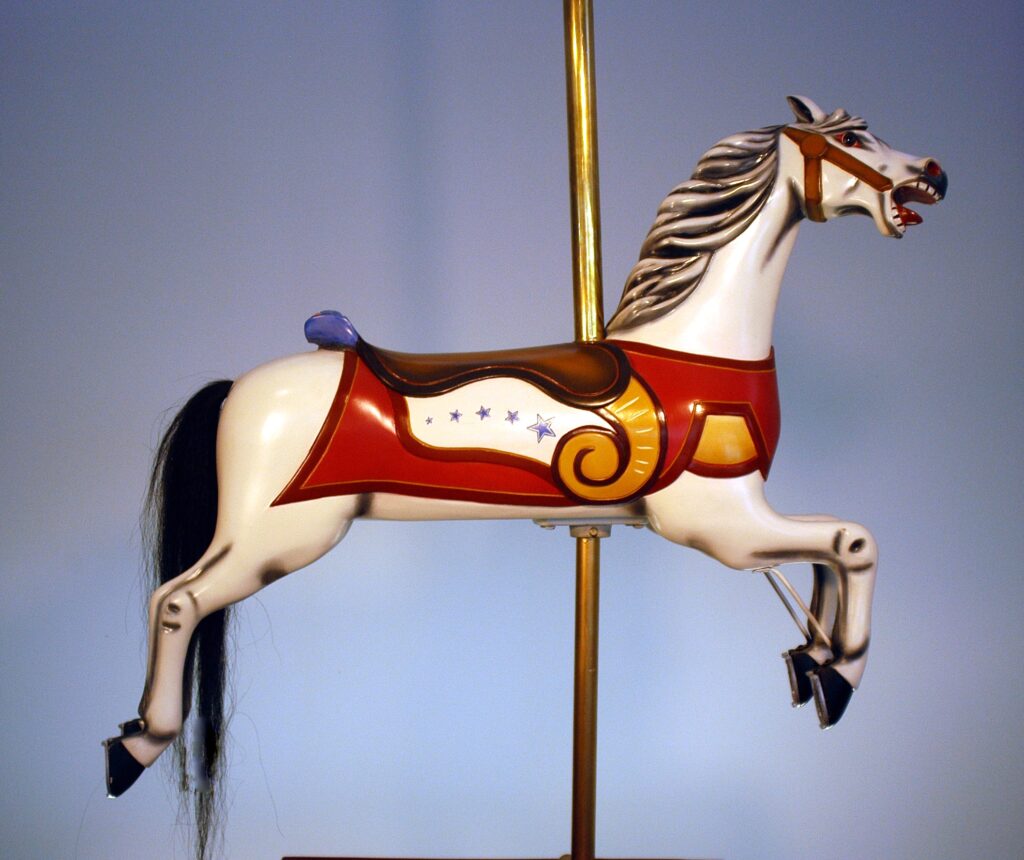C.W. Parker Carousel Museum
One of three museums sponsored by the Leavenworth Historical Museum Association, the Carousel Museum is a Blue Star museum and non-profit organization that operates through community donations and volunteer efforts. Best of all, it celebrates all that is beautiful and good with carousels. Visitors can ride a carousel that’s more than 100 years old.
Tickets are $5 for children or adults, and every ticket includes a ride on the 1913 carousel. Additional rides are $1.50 each.
Opened in 2005, the C.W. Carousel Museum offers:
• Carousels that are historically registered
• Several restored carousel horses
• C.W. Parker cylinder piano
• Artizan A-X-1 band organ
• Wurlitzer 153 band organ
• Rides on a carousel built in 1913
Please Note: The C.W. Parker Carousel Museum is open from 1 p.m. to 5 p.m. on Saturdays and Sundays, and closed each year for the month of January.
Carousels | Venue Rental | Gift Shop | Events
History
Charles Wallace Parker was born in Griggsville, IL, in 1864. His family moved to Abilene, KS, when Parker was 5 years old. He grew up in the wild town of Abilene, the heart of the American Wild West. At the age of 17 he became interested in the amusement business.
In 1892 Parker bought a used Armitage/Herschell track machine and operated it until 1894 when he built his own track machine and started the C.W. Parker factory in Abilene.
By 1900 he had traveling carnivals in the Midwest and was expanding rapidly. He built all types of amusement devices, including the railroad cars to carry them. His carousels began to evolve. He went from the track machines to the jumping carousels, from steam to electric. The carving on the horses began to get more fanciful. Parker continued to grow. By 1905 Parker had four full-sized carnivals on tour throughout the country. He also sold equipment to other amusement operators.
In 1911 Parker began moving to a new factory he was building in Leavenworth. The new building was much larger. And the factory had 10 railroad sidings to hold all of the Parker carnival equipment and amusement devices that he sent around the world. The Parker “Carry-Us-Alls” (his play on words for “carousel”) continued to be the most important part of the amusement business. He built hundreds of small traveling carousels that were used by carnivals worldwide. He also built five large, extravagant “park” machines, designed to be permanently installed in large amusement parks. Only one of those five is still in existence: Jantzen Beach Mall, Portland, Oregon.
C.W. Parker’s carvings behind the cantle (the raised, curved part at the back of a horse’s saddle) are some of the more interesting carvings found on carousel horses. His standard carvings were hound’s heads, roses, tobacco leaves, bull horns, fish, shields, and ears of corn (from his Kansas heritage). He sometimes carved strange creatures with gnome-like features and large feet. He also went through a stage about 1906 where he carved dragons, fish, birds, and exotic women. But the ear of corn behind the saddle became his best known carving. His horses were the only horses known that had this carving.


